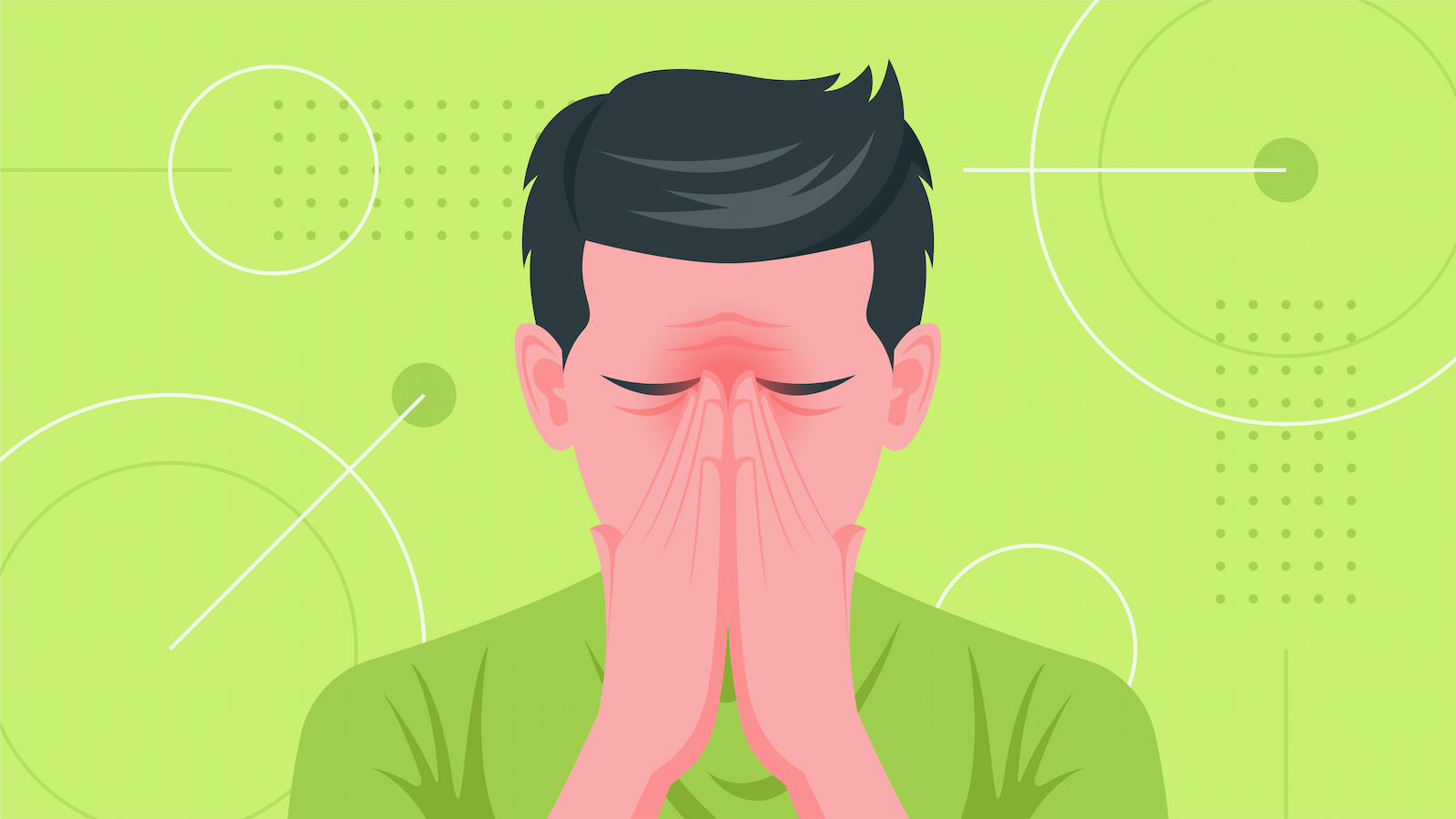If you’re experiencing discomfort with your CPAP mask, these tips can help!
Mask discomfort and skin or nose irritation are leading reasons why people don’t use their CPAP machines as much as they should or, worse still, stop using their CPAP machine entirely!
If you wake up with sores on your face, irritated skin, or annoying skin creases, we understand how frustrating it is.
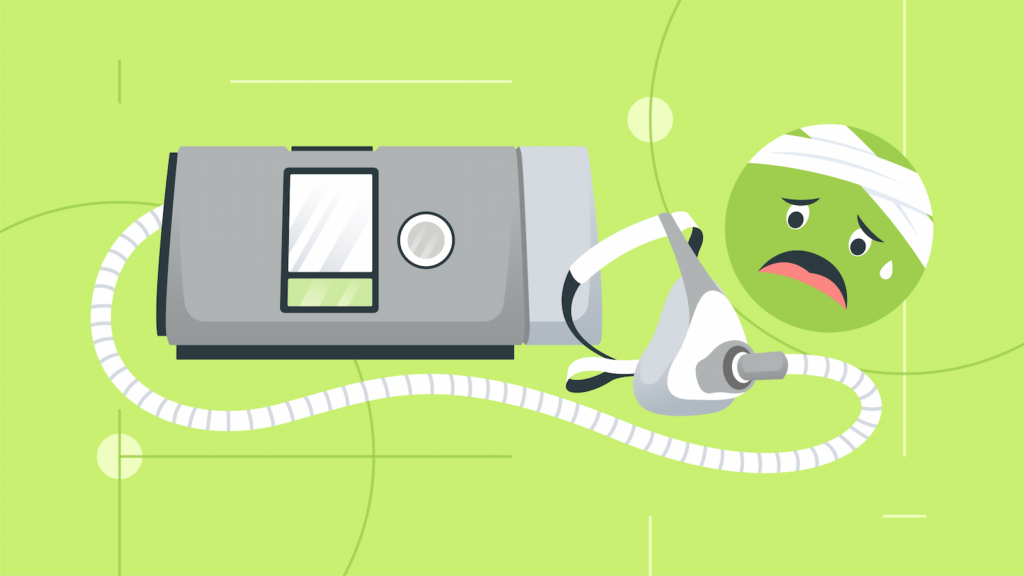
While it might seem like you’ll never fix the discomfort caused by your CPAP mask, fixing most causes of irritation is relatively straightforward.
You just have to figure out why you’re experiencing these sores and irritations in the first place!
In this guide, we’ll cover common causes of CPAP mask sores and what you can do to prevent them or eliminate them for good!
Common CPAP Complaints
Complaints of soreness or irritation when using a CPAP machine aren’t uncommon. Most types of irritation fit into one of two categories:
- Internal: sores in the nasal passages, sinuses, mouth, or throat.
- External: sores on the face, scalp, or other areas of your skin.
Alleviating discomfort and sores will require slightly different approaches depending on the category involved.
However, you’ll find that many types of irritation stem from common roots.
So addressing one issue might resolve another!
Reducing or Eliminating Internal Sores
It’s common to hear about CPAP machines causing irritated nasal passages, tender nostrils, nose bleeds, sore throats, and other internal irritations–especially when new to CPAP therapy.
Every face is different, as is every apnea diagnosis.
As such, it’s hard to give exact advice for what you might be facing.
So we’ll start with the most general causes of irritation and get more specific as we go.
Ditch the Dryness
The majority of nasal discomfort, sore throats, and bloody noses are caused by one thing: dryness.
This is why many CPAP machines now include humidifiers.
If your machine doesn’t have a humidifier, passthrough options are available.
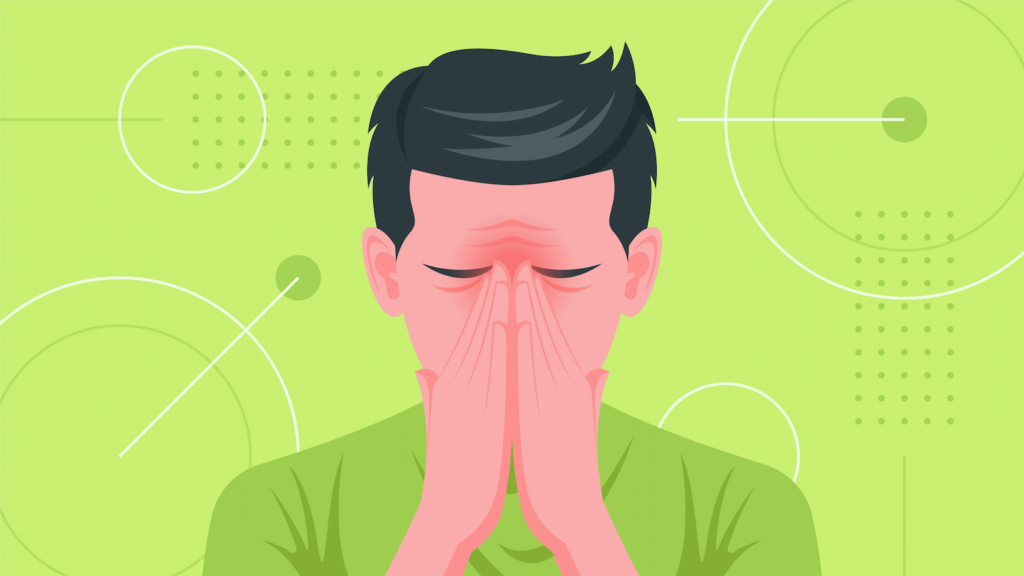
If you’re not using your CPAP machine’s humidifier, start now! It’s one of the most significant comfort improvements you can make, and it’s super simple to use.
Simply fill the reservoir with distilled water and remember to frequently clean any remaining water out to prevent odours or bacterial build-up.
Some units even include heated tubing for increased comfort.
Manage the Moisture
Suppose you’re using a humidifier or heated humidifier and wake up with condensation in your mask or tubing.
In that case, you’ll want to make some more adjustments to prevent skin irritation or external sores.
If condensation is minor, simply placing your CPAP on a stable surface at a height lower than your head will encourage any moisture to run back to the machine instead of toward your mask.
You might also consider warming or cooling your room slightly and moving any bedside fans if they blow directly onto your CPAP tubing.
However, if condensation is significant, you’ll likely need to take further steps.
Two popular options are CPAP tubing insulators and heated CPAP tubing.
Both combat condensation by helping to remove any temperature differences between the heated humidifier and the path to your mouth or nose.
Build a Barrier
Even moist air can irritate sensitive nasal passages and mucous membranes.
Over time, your skin will adapt and become more resilient to the constant flow of air coursing through your mask every night.
But in the meantime, there are over-the-counter products available to help.
Nasal lubricants typically come in a gel which you can apply prior to putting on your CPAP mask.
These gels work to create a barrier that locks in moisture and helps to fend off irritation.
Other commonly used products include petroleum jelly and personal lubricants.
However, it’s crucial to ensure that any lubricant you use is safe for use with your CPAP mask cushions — especially if you’re using a nasal pillow mask that rests just inside your nostrils.
Using incompatible lubricants is likely to degrade your cushion, leading to poor performance and causing additional irritation.
Be Nice to Your Nostrils
If you use a nasal pillow CPAP mask, avoid inserting the pillows or ends too far into your nasal passages.
Most are made to form a seal by sitting just inside the nostril.
Inserting the pillows too deeply might lead to nasal irritation and encourage bacterial growth or infections.
Addressing Skin Irritation and Facial Sores
You have a few different options available for addressing CPAP sores on the outside of your body.
Most are simple and can be addressed with just a few minutes of your time each day.
Common complaints include soreness where straps connect or adjust, irritation at the bridge of the nose, and irritation where CPAP mask cushions touch your face.
A Clean Mask is a Happy Mask
Dirt, debris, and oil are leading causes of skin irritation when using a CPAP mask.
This is one of the leading reasons doctors and CPAP suppliers recommend cleaning your mask and mask cushions every day.
Whether you use CPAP cleaning wipes or give them a quick soak and rinse using warm, soapy water, it only takes a few minutes.
It can help to reduce skin irritation, prolong mask cushion performance, and avoid nasty smells or bacterial growth.

Related Guide: CPAP Machine Cleaning & Maintenance Fundamentals
Cleanliness aside, dirty cushions are more prone to sliding against your skin and require more pressure to create an effective seal–especially if you have a high-pressure prescription.
This often leads people to chase a better seal by tightening their headgear.
In doing so, this creates pressure points in both the headgear and the cushion and only makes skin irritation worse!
By keeping your CPAP mask clean, you can ensure a snug fit, tight seal, and minimal pressure against your head and face without having to crank up the tightness of your mask.
Scrub Away Skin Irritation
A clean mask is only half the battle when it comes to reducing skin irritation.
Clean skin is important too! Much like with nasal lubricants, it’s important to consider your CPAP mask cushion when adjusting your skincare routine.
Washing your face shortly before putting on your mask is an excellent way to remove natural facial oils, keep any dander or debris out of your mask, avoid clogged pores and other skin issues, and ensure a firm seal with your CPAP mask cushion.
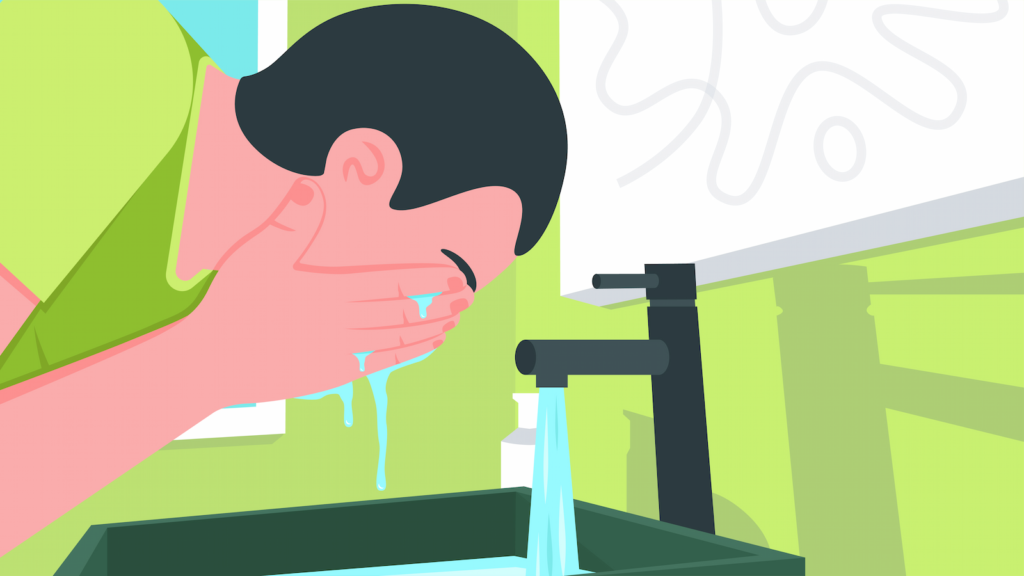
However, if you use an oil-based cleanser, slather on lotions, or use other products that leave a residue on your skin, you might remove one layer of irritation-causing problems to replace them with another.
In most cases, oil-free moisturizers or simple soaps are your best bet.
Choosing something with a light fragrance or no scent can also prevent smells from building up on your cushion or mask.
Be sure to pat your face dry after washing if heading straight to bed too!
Tame Your Facial Fuzz
Unfortunately, facial hair and mask seals don’t mix very well.
If you have prominent facial hair, it might be causing mask slippage issues as well.
Many CPAP machine users who like to sport a beard, goatee, or moustache find that they must find a balance between facial hair styling and the shape of their mask.

When possible, mask cushions (or liners) should make direct contact with the skin for optimal seal and minimal movement while sleeping.
If you want full freedom with your facial hair, a nasal pillow mask is probably your best option as it sits against the nostrils. So a little bit of trimming and upkeep is all you need to keep seals solid.
New Cushions Make All the Difference
You probably already know that you should regularly replace your mask cushions for optimal performance.
But this can also impact skin irritation and mask comfort as well.
Older cushions often provide less cushioning, requiring tighter headgear settings to maintain an effective seal and encouraging pressure sores.
They can also develop tiny cracks and surface inconsistencies that scrape against your skin, leading to rashes, sores, and other irritation.
Exact replacement schedules will depend on the mask you use.
However, most manufacturers recommend replacing your cushions bi-weekly or monthly.
Related Guide: CPAP Machine Cleaning & Maintenance Fundamentals
Loosen Up for Less Irritation
We’ve touched on this in other sections, but it’s important enough to reiterate on its own.
The best way to minimize discomfort and skin irritation related to your mask is to keep your headgear as loose as possible while maintaining an effective seal.
If you’re not sure where to start. Put on your CPAP mask and turn on your airflow.
Pull the mask a couple of inches from your face and allow 30 seconds to a minute for the cushion to expand and reach its fullest.
Then place the mask back against your face and adjust your headgear.
Exact adjustment methods will depend on your mask and headgear design, so be sure to consult any documentation that came with your mask or headgear for further instructions.
In most cases, if you have multiple adjustment points, it’s best to start with minor adjustments at each point instead of large adjustments in one or two places.
This will ensure that you have even out the tension on the headgear and pressure on your face.
Assessing Allergies
If you experience severe discomfort or try the tips above, and nothing seems to help, you might be dealing with an allergic reaction.
While silicone is typically one of the more skin-friendly materials around, allergic reactions are not impossible.
If you suspect a skin allergy, mask liners can help place a barrier between your face and your cushion.
You might also consider a mask with a gel-based cushion instead of silicone or a fabric mask to help provide PAP benefits without the allergy concerns.
If you notice frequent irritation where your headgear rests, you could be facing a reaction to the materials in your straps or adjustment connections.
Many companies make third-party headgear covers and wraps to help with this or provide additional padding between your straps, connectors, and your face.
It’s Not You… It’s Your Mask
If the tips above don’t help to reduce skin irritation or nasal sores while using your CPAP machine, you might need a different mask type or design.
Switching between full face, nasal, and nasal pillow mask options can provide flexibility depending on your facial structure, sleep position, and therapy needs.
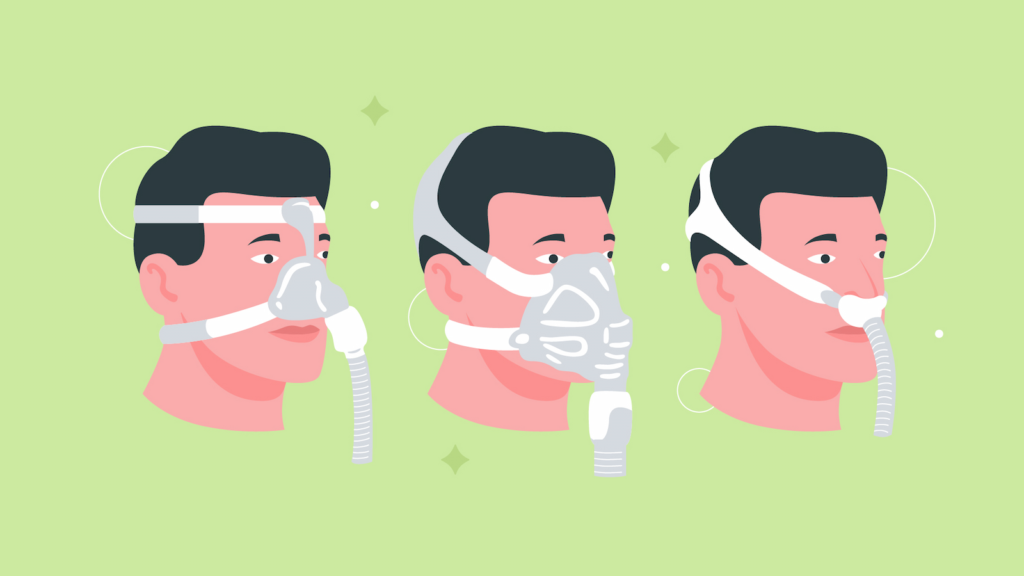
If you love your mask design—or have particular prescription needs—you might also try the same mask design but one size larger or smaller to see if it provides a better fit and reduced irritation.
Consult our CPAP mask comparison guide for an in-depth look at the considerations behind finding the right mask type for your needs.
Summary
- Internal sores and irritation from PAP therapy often center around dryness.
- Nasal lubricants and humidifiers are an excellent way to prevent or relieve this type of irritation.
- Heated humidifiers add comfort but may result in extra condensation, requiring heated CPAP tubing or CPAP tubing insulators.
- When using nasal pillow masks, only insert the pillow just inside the nostril to minimize irritation.
- External irritation, including sores and skin redness, often result from poor seals or overly tight headgear.
- Cleaning your CPAP equipment and skin are also critical components of preventing skin irritation and CPAP mask sores.
- Using oil-free cleansers, mild soaps, and little to no fragrance can ensure adequate cleaning without harming your CPAP components or further aggravating your skin.
- Facial hair can impede the seal of your mask, requiring you to adjust your headgear too tight. Keep areas where the mask touches your face smooth and hair-free when possible.
- Mask liners are an effective alternative for allergies or skin sensitivity issues.
- Replacing your mask cushion every 2 to 4 weeks ensures optimal performance and can prevent skin irritation caused by cushion degradation.
- Inability to eliminate or drastically reduce skin irritation could indicate an improper mask choice or skin allergy. Trying other designs or alternate sizes could provide relief.
CPAP Supply’s comprehensive selection of CPAP masks, humidifiers, and hose covers provides everything you need to find a mask that doesn’t just address your PAP therapy needs but offers comfortable wear for a deeper sleep. Once you’ve found a mask that works for you, we can help you keep your cushions fresh, tubing clean, and headgear sturdy with our wide assortment of CPAP mask parts and accessories. Contact us today to get started!
References:
- Silent Night Health: Nose Bridge Sores and Irritation From CPAP Mask Use
- Verywell Health: How to Avoid Marks on Your Face with a CPAP Mask
- Mayo Clinic: CPAP Machines: Tips for Avoiding 10 Common Problems
- The American Sleep Association: CPAP Side Effects

